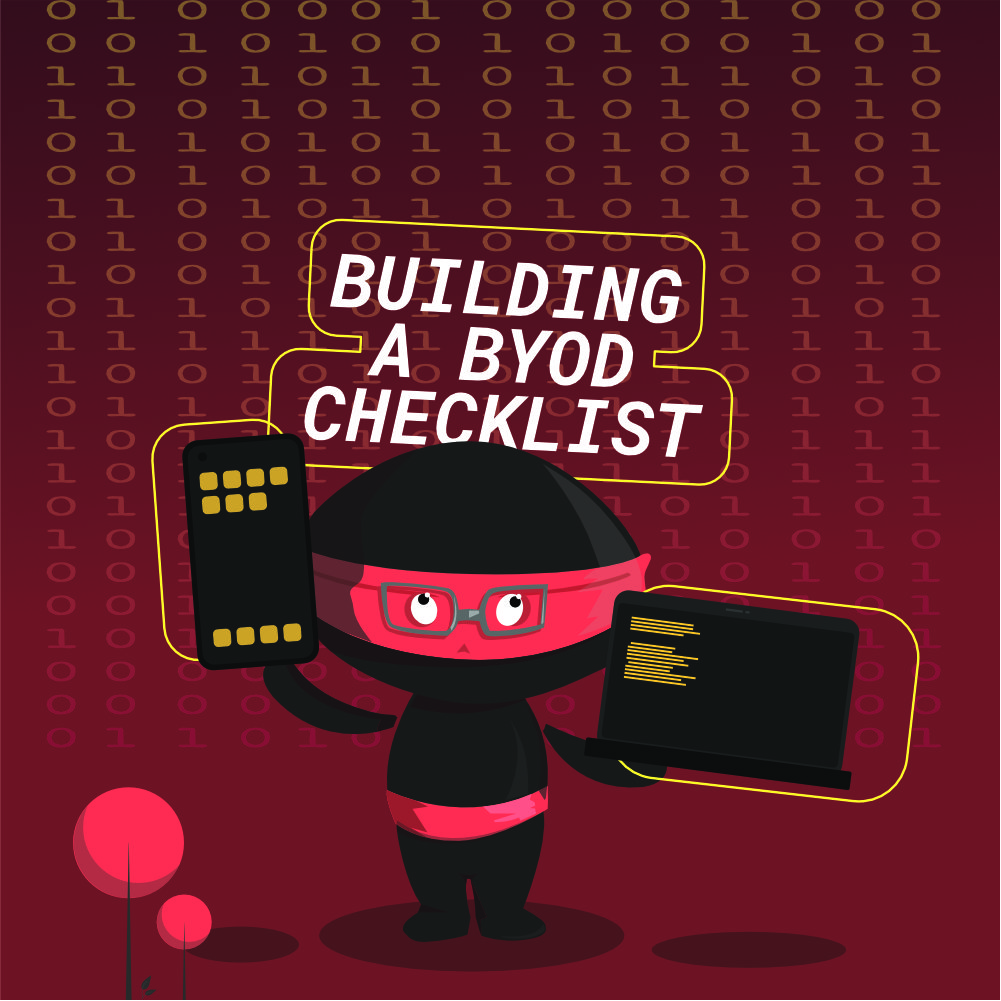Building a BYOD Checklist for Your Business
by Ben Brown | 05/17/2023

by Ben Brown | 05/17/2023

BYOD (Bring Your Own Device) policies have become the norm for many businesses and industries. In fact, most companies today have a BYOD policy in place. But what exactly is a BYOD policy? What do you need to know to build one that works for your business? And how can you protect yourself from cyber threats and attacks? Let's take a closer look at these questions, by reviewing some important information about BYOD policies:
The first step to building a BYOD policy is to define what you want your policy to accomplish. The goal of this section is not to tell you how to write your BYOD policy, but rather help you make sure that it's as effective as possible. Here are some key considerations:
The first step in building a BYOD checklist is knowing where your data is stored. Data storage is a key part of the BYOD process, and it should be secure and compliant with company policy. Employees should only have access to their own files and not those of other employees, so you'll want to make sure that each person has his or her own folder on the network drive where his or her files are stored. The next step is backing up these folders regularly so that if anything happens (like someone accidentally deletes something), there's still a copy somewhere else on your computer system or server where you can recover it from later if needed.
The next step is to document user expectations. Your BYOD policy needs to be clear, comprehensive and enforceable. That means you should have a list of acceptable devices that users can bring into the office, as well as a list of apps they can install on those devices. You should also define what type of data may be stored on these devices (for example: company-related or personal). It's important for businesses that allow employees to use their own mobile devices at work to have clear guidelines about what types of apps are allowed on those devices--especially if there are apps that could compromise security or privacy issues involved with accessing sensitive information from outside networks like public Wi-Fi hotspots or cellular networks where other people may be able to spy on your connection through tethering software installed on their phones/tablets/laptops etc..
You may not have control over how your employees use external systems, but you can control what they're allowed to access and how they do it. You should establish a policy around this that includes:
Embracing a Bring Your Own Device (BYOD) approach can boost productivity and flexibility, but it also introduces new security challenges for businesses. In this article, we provide guidance on building a robust BYOD checklist to help you effectively manage and secure personal devices within your organisation. Our key takeaways cover crucial aspects such as defining a BYOD policy, implementing security measures, ensuring device compatibility, providing employee training, strengthening network security, utilising MDM solutions, and conducting regular audits.
BYOD policies are a way to manage the use of personal devices in the workplace. They help protect your company's data and information, as well as its infrastructure. A BYOD policy can be used to help employees understand what types of devices are allowed on campus, as well as how employees should handle them when they're not being used for work purposes.
A BYOD policy is a critical part of any business because it helps protect the company's data and assets. As a business owner, you want to make sure that your employees are properly trained in the use of their devices so that they can be productive at work while also taking necessary precautions to protect sensitive information. By having a BYOD policy in place, you can ensure that all employees understand what types of personal devices are allowed for use on company networks, as well as their responsibilities when using those devices. A strong BYOD program will also help reduce costs by reducing capital expenditures (CAPEX) on hardware and software while improving productivity by allowing workers more flexibility in how they work remotely or at home
The need for cyber security is a given. Cyber attacks can be expensive, with losses of millions of dollars and reputational damage to your business. The best way to protect your company from cyber attacks is by implementing a BYOD policy that includes adequate security measures.
Data breaches are costly. A study by IBM and the Ponemon Institute found that the average cost of a data breach for companies in North America is $4 million. That's a lot of money! A breach can also cause serious damage to your reputation and customer loyalty, resulting in the loss of customers, revenue, productivity and intellectual property (IP). There are many reasons why companies should take steps to protect their data from cyber attacks:
We hope that this guide has helped you to understand the importance of BYOD policies and their role in protecting your business. With all the recent high-profile attacks on companies and individuals, it's more important than ever before to make sure that your data is safe. We also want to stress that while the checklist above may seem overwhelming at first glance, it really isn't so bad once you get started!
Start scanning your projects for free. You will get a free breakdown of your security status. Start securing your future now.
Get started